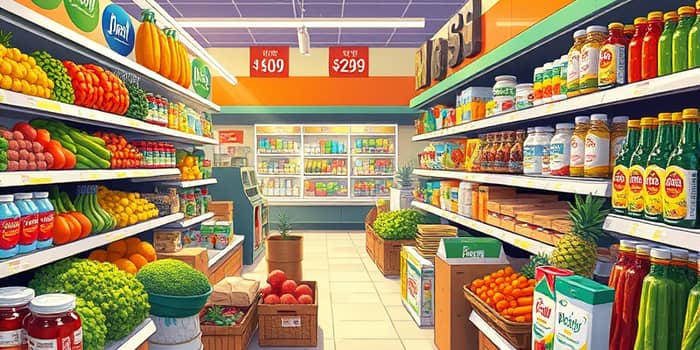
As global supply chains adjust to lingering pressures from tariffs, weather events, and shifting demand, food prices continue to climb, influencing both households and investors. In May 2025, US food inflation reached 2.9% year-over-year, with food at home prices up 2.2%. This dynamic, though challenging for consumers, has created a unique opportunity for the consumer staples sector, as investors seek refuge in companies able to navigate rising costs and maintain stable margins.
Food inflation has been at the forefront of economic discussions since the sharp price spikes of 2021–2022, when overall food costs rose 10.4%, eggs surged by a third, and dairy became 13.5% more expensive. While fresh produce costs are up another 3% due to 2025 tariffs, projections suggest a gradual easing to 2.7% by late 2025, 2.5% in 2026, and 1.9% in 2027.
These elevated prices stem from a combination of higher input costs, transportation challenges, and trade policies. Tariffs alone have added roughly 2.3% to food prices this year. For households, this means an extra $2,800 in annual expenses on average—and for the poorest 20%, around $1,300 more each year.
Consumer staples companies have historically thrived in environments of inelastic demand, and 2025 is no exception. The resilient consumer staples sector continues to outperform broader markets, with key players like Procter & Gamble and Coca-Cola demonstrating strong sales despite rising costs. As of May 2025, the sector’s P/E ratio at 19.8x remains well below its three-year average of 28.3x, signaling potential undervaluation.
Procter & Gamble shares, for example, rose 18% year-to-date. Consumers, focused on essentials such as diapers, detergents, and packaged foods, have shown a willingness to absorb price increases when brands deliver perceived value. This ability to pass high costs to consumers without significant volume loss is central to the sector’s outperformance.
Trade policy and macroeconomic trends play pivotal roles in shaping food inflation. The 2025 US tariff regime has pressed input costs higher, forcing companies and consumers to adjust. Strong employment figures and healthy consumer balance sheets have cushioned demand, but uncertainty remains over further policy changes.
These factors not only drive price trajectories but also influence corporate strategies and investor positioning. As pressure mounts on non-essential categories, staples companies find themselves in a defensive sweet spot, offering consistent returns even amid broader market volatility.
Faced with rising costs, consumer staples firms are deploying a range of tactics to safeguard margins and market share. Companies are emphasizing refined product mixes and pack sizes to cater to budget-conscious shoppers. Smaller packages at slightly lower prices can maintain volume even when per-unit profits narrow.
Investment in automation and digital tools to reduce waste and boost efficiency has accelerated. From AI-driven demand forecasting to robotics in manufacturing, these technologies help companies streamline operations and offset input inflation over the medium term.
While consumer staples have enjoyed defensive positioning, several risks could alter the outlook. Further tariff escalations, shifts in global trade policy, or an unforeseen economic slowdown may test the sector’s resilience. Investors should weigh these risks against the traditional defensive attributes of staple stocks.
For portfolio management, staples stocks offer a blend of strong brands and pricing power that can help cushion returns. Dividend yields and consistent cash flows further enhance their appeal as core defensive holdings during uncertain periods.
As food inflation remains elevated, consumer staples companies continue to demonstrate their defensive strengths. Investors seeking stability amid market volatility may find these stocks particularly compelling. The sector’s capacity to preserve margins through pricing strategies and operational efficiencies underpins its resilience.
Meanwhile, consumers adjust spending patterns, prioritizing essentials even as budgets tighten. Companies that excel at balancing value and innovation stand to benefit, translating rising food prices into sustained revenue growth.
Ultimately, understanding the interplay between disproportionately impacted low-income households and corporate pricing strategies offers insights into both market dynamics and broader socioeconomic trends. For investors, the consumer staples sector represents a beacon of stability in a landscape marked by uncertainty, delivering reliable performance through the peaks and troughs of the economic cycle.
References













